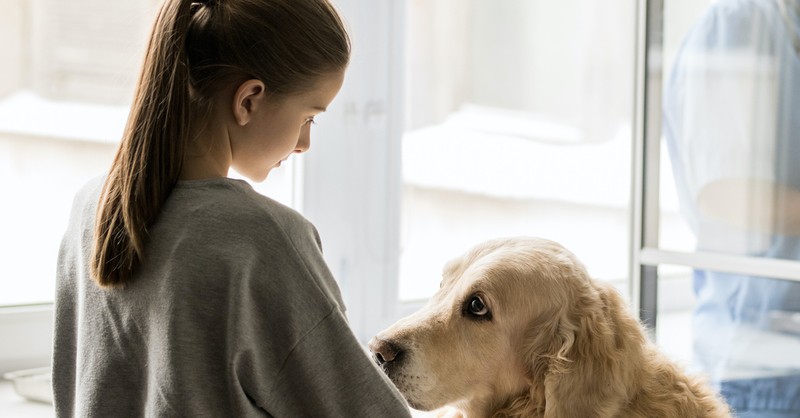How to Help Your Kids with Grief After the Loss of a Pet

Looking back, I knew the day was quickly approaching when we would have to put our cat down. His health conditions were mounting. He was growing increasingly lethargic as his body was failing. None of us wanted him to suffer.
When the day arrived, I walked with my two older sons into our vet’s office. My youngest son was a toddler; because he was too little to understand, he stayed back with my husband. The vet was surprised to see my two older sons with me, however. They were grade and middle school aged at the time. As she looked at their tear-streaked faces, she asked me if I really wanted them to remain in the room.
I told her yes, and my sons agreed. I had prepared them for this visit. We had talked through what would be happening, and I had given them the choice to be present.
The Gift of a Good Goodbye
While my sons’ decision might not be what every child would choose, here are five reasons why I encouraged them to stay:
1. There is a gift in a good goodbye. As a hospital chaplain, I’ve seen grief compound in situations of sudden loss. Standing with a loved one in the end is never easy, but it can assist in your healing and bring the one you love comfort. The opportunity to vocalize or demonstrate the importance of a loved one (pet or person) firsthand is a precious and fleeting opportunity.
2. I knew this would be a formative experience. I knew my sons would always remember the passing of their first pet. Therefore, I wanted the experience to be as helpful as possible and serve as a touchpoint. When they encountered future loss, I wanted them to remember what they learned beside me that day.
3. I wanted to empower them. Feeling pain is uncomfortable. I welcomed my sons’ tears, words, and gestures (as I expressed my own) in that moment of loss. But I also wanted to let them know that they could use their pain to help another. Our kitty would be comforted by their voices and tender hugs as his last memory. They could make a difference through their presence and bravery in that moment.
4. I wanted to model strength. Having my children stay in the room took strength, for I was mourning too. I chose to model what I hoped to see from them. I didn’t want them to see me as someone who was too fragile for their pain; rather, I wanted them to see what we could do together.
5. Confronting death is sad, but important. While acknowledging the reality of death is sad, it can also call us to action. I learned firsthand the gift of each day while working beside hospital beds. I was inspired to live wisely and fully, or to number my days, just as scripture encourages (Psalm 90:12). This is a powerful message for all of us, including children.
My goal is to raise children who are brave in the face of loss, empowered to make a difference through their life experience, and comfortable expressing hard emotion with the support of others. This isn’t an easy goal. For one, popular culture celebrates and esteems youth, not aging. Second, death and loss are challenging topics to bridge in everyday conversation.
Continue reading about loss on Crosswalk & learn practical tips you won't want to miss—they're the difference between healing well or holding onto hurt...
It's been a while since I've posted! I have been quiet, but not idle—I've been working on things for you! Stayed tuned for new shows in the new year, a new *look* for the website this spring, and more writing news. In the meantime, my devotions have been featured recently on iBelieve and Crosswalk. Check out this one on shining God's light this Christmas or this one on God's strength available to you.
Comments
Post a Comment